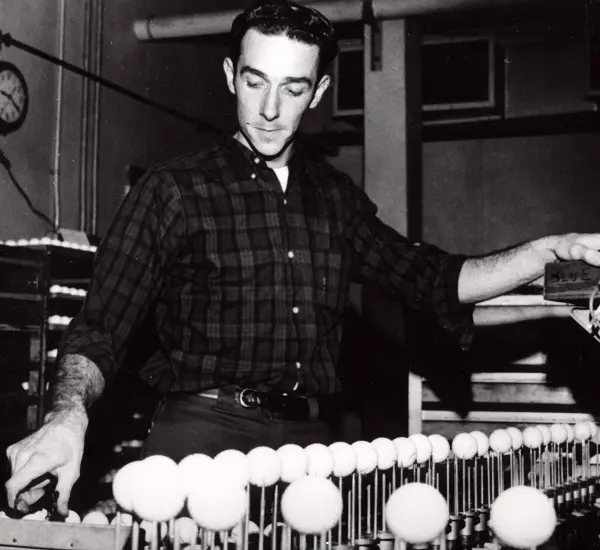Phil Young, a dedicated amateur golfer and owner of a precision molded rubber company, missed a well-stroked putt in a match with his friend, who happened to be the head of the x-ray department at a local hospital.
Convinced that the ball itself was at fault, Young and his opponent went to the hospital, x-rayed the golf ball in question and found that its core was, in fact, off-center.
After this initial discovery, Young took X-rays of more golf balls and found that most were poorly constructed with off-center cores and prone to erratic shots. This inspired Young to persuade Fred Bommer, a fellow MIT graduate, rubber specialist and avid golfer, to produce their own line of golf balls, which would become known as Titleist.

1930: Young developed a machine that could uniformly wind rubber string around a rubber core, making a “dead center” golf ball. He named the ball “Titleist,” noting it was the “winner” of the quest to create the best for the game.
1935: The golf division of the Acushnet Process Company produced the Titleist golf ball which had consistently been the company’s most successful product.
1948: Introduced “Dynamite Thread” to increase the yardage of their balls.
1949: Titleist became the most used ball at the U.S. Open Tournament.
1976: Titleist was purchased by American Brands (now known as Fortune Brands).
1985: Fortune Brands sold off the Acushnet Company’s Acushnet Rubber division, which was Acushnet’s original business (circa early 1900s).
2002: Titleist reached the $1 billion mark in annual revenues.
On December 8, 2010, Fortune Brands announced that it would soon sell or spin off Titleist and some other brands. It was then announced on May 20, 2011 that a Korean group associated with Fila Korea, Ltd. and Mirae Asset Private Equity would purchase Acushnet for $1.23 billion in cash.
Acushnet employs roughly 3000 people in Massachusetts, making it one of the largest employers in the region. It is headquartered in Fairhaven, Massachusetts alongside its Packing and Distribution Center about three miles south of its original location.
They also have two golf ball manufacturing plants and an R&D Technology Center located in the New Bedford Industrial Park, as well as a Custom Golf Ball plant located in New Bedford.
And all of this due to a missed putt… and a lot of blood sweat and tears, persistence, & dedication to making things happen!

